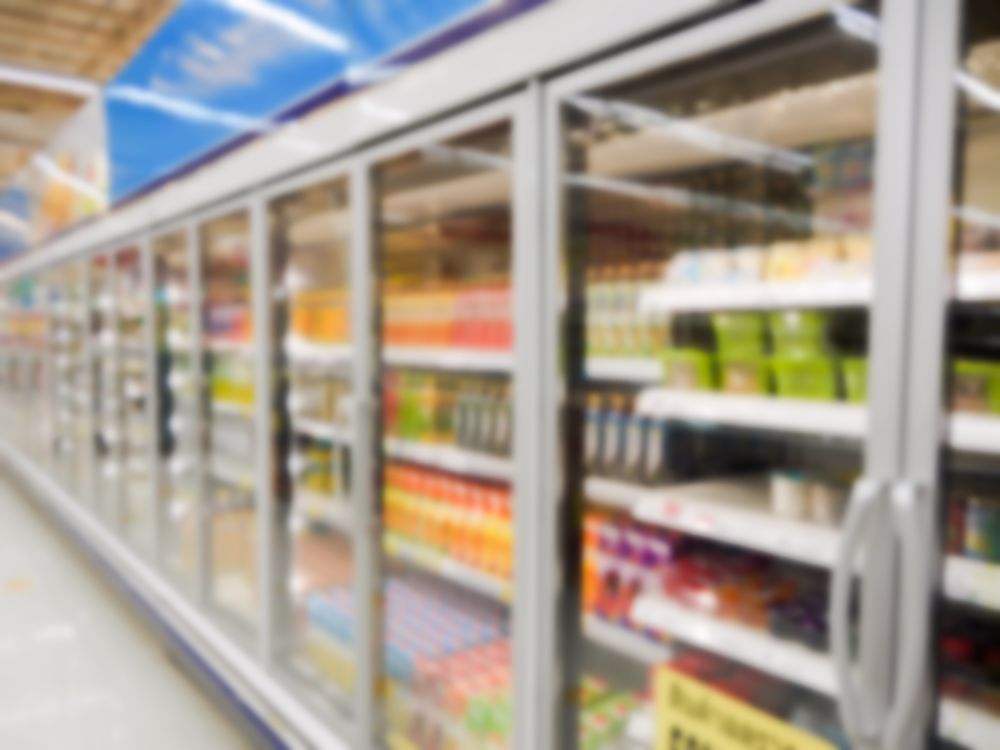When working with food products, keeping perishable items in an ideal environment for quality and safety is a top priority. For many fresh foods, that means storing them at the appropriate temperature.
There are many stops in the cold chain for food items, including the farm, a transportation vehicle and the restaurant, grocery store or other final destination. Maintaining an appropriate temperature throughout the entire process is essential to ensure consumers get the best quality food. That’s why everyone who works in food service, regardless of their place in the cold chain, needs a dependable and accurate refrigerator temperature monitoring system.
The importance of a refrigerator temperature monitoring system
As a general rule, chilled foods should be stored or transported at a temperature between 0-5 degrees Celsius, and frozen foods should never be kept at a temperature above -18 degrees Celsius, according to the Australian Food and Grocery Council.
If certain foods are kept at dangerously warm temperatures, bacteria might grow on the food and make it unsafe, or at the very least, unpleasant to eat. On the other hand, if chilled foods are kept at a temperature that is too cold, the products may form ice crystals, which damage key qualities like taste and texture.
A refrigerator temperature monitoring system constantly records the temperature of the refrigerators and freezers. And, it sends instant alerts to staff members when the temperature dips too low or rises too high. It’s not enough to frequently check the thermometer in the storage area — even brief temperature changes can be dangerous for perishable products. Keeping an accurate record of all climate fluctuations provides valuable context for food safety personnel about equipment functionality, the effects of opening and closing the unit and periods of time when the products experienced an unsafe environment.
‘A refrigerator temperature monitoring system sends instant alerts to staff members when the temperature dips too low or rises too high.’
The benefits of a wireless refrigerator temperature monitoring system
To take food safety precautions a step further, the quality assurance team can invest in a wireless refrigerator temperature monitoring system.
Wireless temperature loggers have additional features that make it easier for professionals to adhere to cold chain requirements.
For example, wireless temperature loggers can pair with cloud-based software, allowing staff not only to constantly record the temperatures within storage units, but also view them at any time. This enables food safety personnel to observe temperature fluctuations in real time, giving them a better sense of the functionality of their freezers and refrigerators and the kinds of environmental changes that have significant effects on internal temperature.
Additionally, 24/7 temperature monitoring enables the device to set off an alarm when the temperature of the fridge or freezer deviates from the acceptable range. This allows workers to observe a problem as soon as it begins, putting them in a better position to to remedy the situation before it’s too late. This improves the rate at which food products successfully make it to their destination and it cuts down on wastage.
Because wireless temperature monitoring systems are WiFi-capable, they have a remarkable amount of storage space for information. The data that they constantly record can be kept in a safe place so if there is a problem, even far into the future, team members can look back at the temperature changes and identify patterns. Plus, the data is easily accessible for anyone with a smart device and access to cloud storage.
‘Because wireless temperature monitoring systems are WiFi-capable, they have a remarkable amount of storage space for data.’
How to select a temperature monitoring system
When selecting a wireless refrigerator temperature monitoring system, it’s important to keep the intended use in mind. For example, different temperature loggers might be necessary for transportation and on-site storage. Luckily, Testo carries a range of products for various needs.
The testo Saveris 2 is ideal for any step in the cold chain. It’s reliable, WiFi-capable and has plenty of storage, so professionals can access temperature data quickly and easily. Temperature information is transmitted and automatically archived to the testo Cloud. Plus, it alerts staff of potential problems, which leads to minimal loss of refrigerator stock. After installing the device, owners simply need to set an acceptable temperature range so when the probe detects a deviation, the device automatically knows when to set off an alarm. Also, there are numerous wired temperature probes available with the testo Saveris 2 units for a range of specialist measurements and requirements.
For transporting chilled or frozen goods, the testo 174 T and the testo 184 T 1 are great options. The testo 174 T is a mini temperature logger with ample storage and a large, readable display screen. Its compact size makes it very easy to transport without compromising usability. Additionally, the testo 184 T 1 is an all-in-one temperature logger, complete with accurate wireless temperature sensors, an easy configuration process, readable screen and the ability to create PDF reports with data from every step of the journey. This product is ideal for transportation because it’s equipped for short-term data storage and compilation, plus it can function in a range of environments.
Whatever the specific temperature monitoring needs are, a quality assurance team should seek wireless refrigerator monitoring systems with ample storage, intuitive data compilation capabilities, WiFi compatibility and more. Additionally, the temperature probes should be accurate and reliable so professionals can have peace of mind in knowing that they will be alerted at the first sign of a dangerous environment.
Testo has a wide range of wireless refrigerator temperature monitoring systems. Contact us today to learn more.









 Reduce cooking oil costs while ensuring quality
Reduce cooking oil costs while ensuring quality Expert knowledge on CO2 monitoring
Expert knowledge on CO2 monitoring Refrigeration knowledge - in 3 modules
Refrigeration knowledge - in 3 modules



